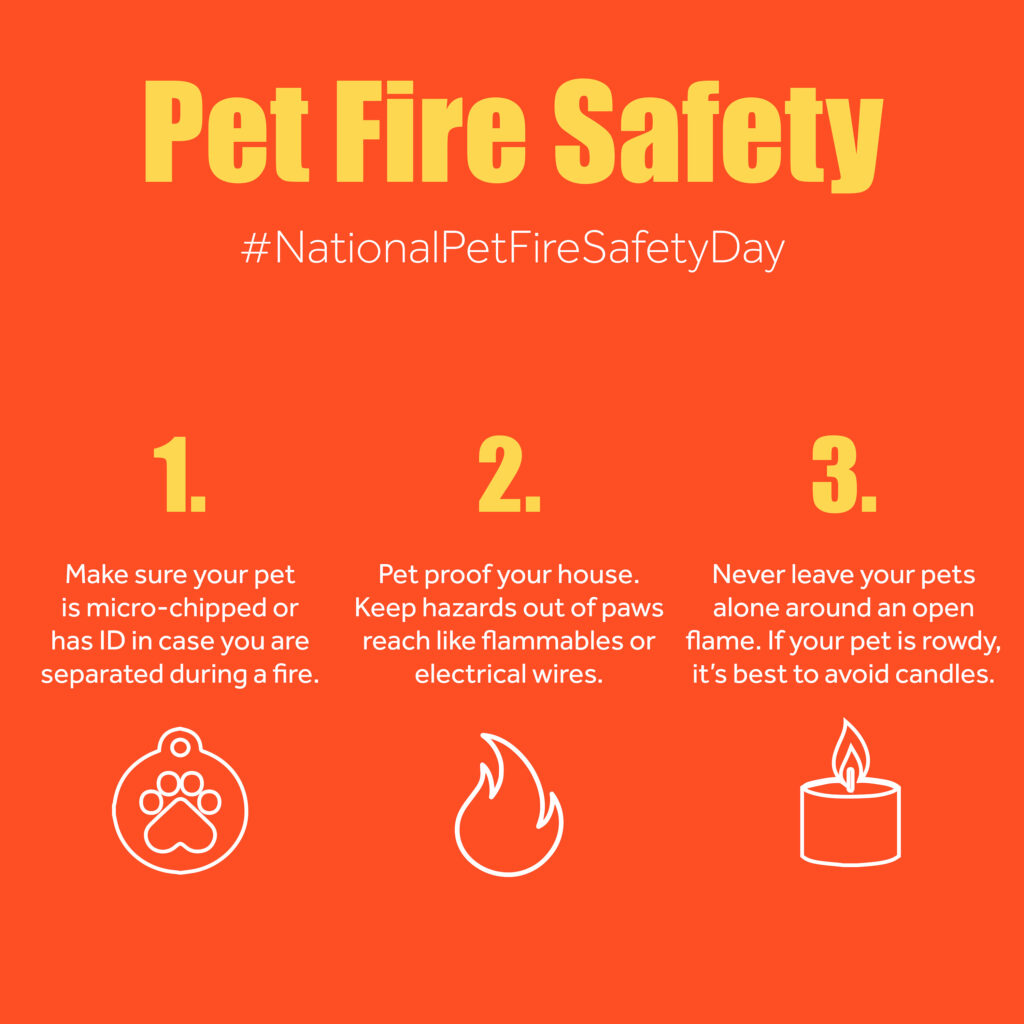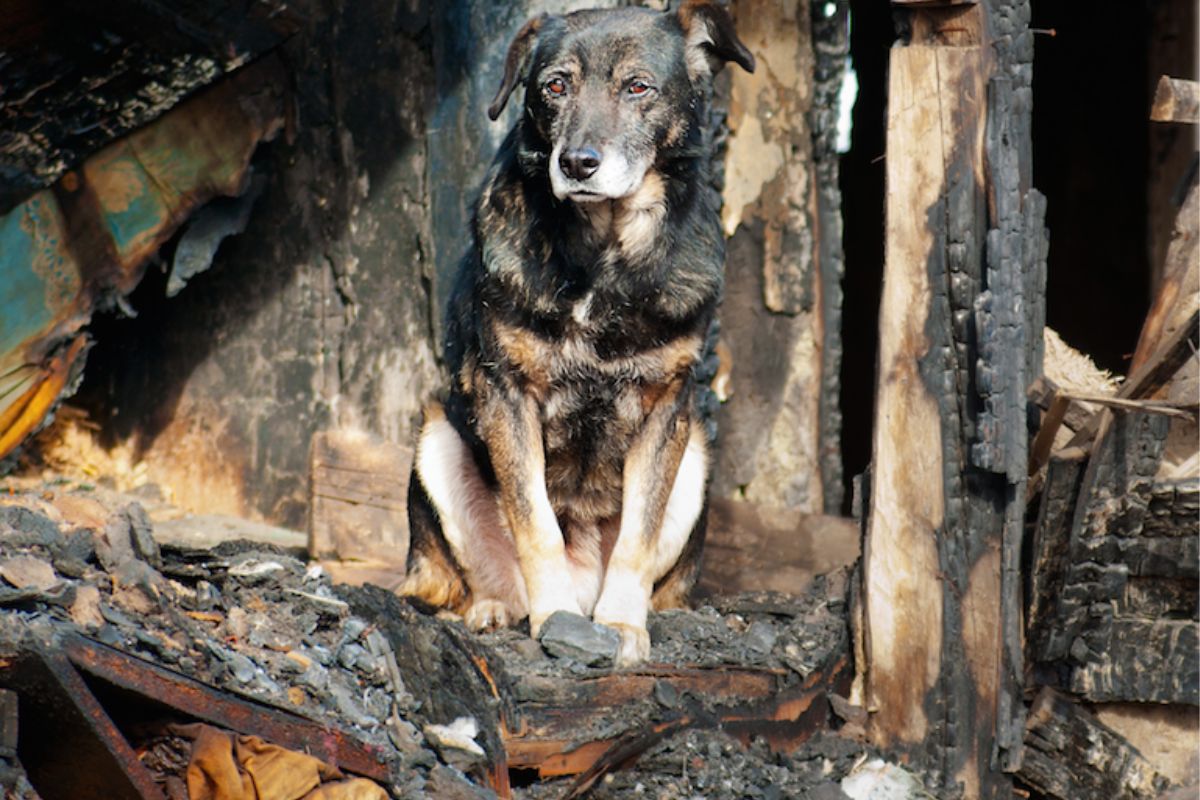Did you know that July 15 is National Pet Fire Safety Day? Well, even so, fires can happen in homes all year long.
In fact, the holidays can be a dangerous time with pets around. Why?
Because come the December holidays, and you’ve got lighted candles with Chanukah. In addition, live Christmas trees that aren’t watered can become a fire hazard.
I can remember practicing fire safety with my children. But until I started to work on this article, I never thought about our pet’s safety in a fire. Have you?
Why you should think about pet fire safety at home
Pet fire safety is a real concern. According to the American Red Cross, nearly half a million pets are affected by house fires each year.
At the same time pets cause about 1,000 fires each year. This is according to the National Fire Protection Association.
You’ve probably seen that Farmers Insurance commercial. You know the one about the dog that sets a pizza box—and then the whole house—on fire while trying to steal a slice.
Well, that actually happened in real life and the whole thing was caught on camera. Thankfully, the only real damage was to the box of pizza.
Do you know what to do with your pet in a fire
We’ve changed our behavior once fire safety got onto our radar. For example, we’ve started hanging up our two dogs’ leashes by the front door.
We do this every time we come in from a walk. In the event of an emergency, I want to know exactly where I need to go to get my dogs’ leashes are.
This way I can get the leashes and get the dogs out of the house safely and quickly. Of course, this is assuming there isn’t a fire by the front door, of course.
Tips for pet fire safety
With all of this in mind, here are some pet fire safety tips. In addition, I’ve linked to products you can easily buy on Amazon to make your home as fire proof as possible for everyone living there–humans and pets alike:
Show your house has pets
You want to display signage for emergency response teams. These would be “pet finder” decals and signs you place in windows that indicate where animal companions are most likely to be found in the event of a fire.
This is especially helpful if you keep your pet in a kennel or crate. Be sure to display the sign in an area responders can easily see.
Keep pet beds and toys away from open flames
During the winter months, our pets enjoy the heat from a fireplace or wood stove as much as we do. But it’s important to avoid placing anything that can potentially catch fire—like a dog bed or chew toys—near any open flames.
Be sure to place candles out of your pet’s reach. Also, avoid spots where they can be easily knocked over.
Prep your house to prevent fires
Make sure you have working smoke alarms. Working carbon monoxide detectors are a good idea, too.
Do your best to pet-proof your home, paying special attention to electrical cords. Keeping cords out of reach is especially important if you have a puppy or kitten that might chew on them.
Make sure your pets are microchipped
Of course, it’s important for your pet to be wearing up-to-date identification tags at all times. But when you microchip your pets, you provide additional insurance.
That is, you can significantly increase the likelihood of a reunion if your pet runs away amidst the chaos of a fire. Fires are confusing and stressful for everyone involved, including your pets.
Don’t try to be a hero in a fire
In the event of a house fire, if you can’t find your pet, get out first. Think about those instructions on the airplane: Put on your oxygen mask first before helping someone else.
While it’s heartbreaking to think about leaving your pet behind—and hard for this dog mom to even write those words—you could be risking your own life if you attempt to save your pet on your own.
As soon as help arrives, let emergency response teams know that your pet may still be inside. Give them an idea of where to look, such as a cat’s favorite hiding spot.
The best thing you can do for your pet is take care of yourself first. This ensures you’re able to care for your pets for years to come.
Monitor your pets after a fire
Pets can suffer from smoke inhalation just like humans. So, keep an eye on them.
For example, if your pet seems to be acting lethargic or is having any difficulty breathing following the fire, this could be a sign of smoke inhalation. Let first responders know so they can provide appropriate care.
Many fire departments are trained and equipped to help people and pets. Some fire companies even have oxygen masks made specifically for animals.
Then, as soon as possible, bring your pet to a veterinarian to be evaluated and to receive any needed care.


